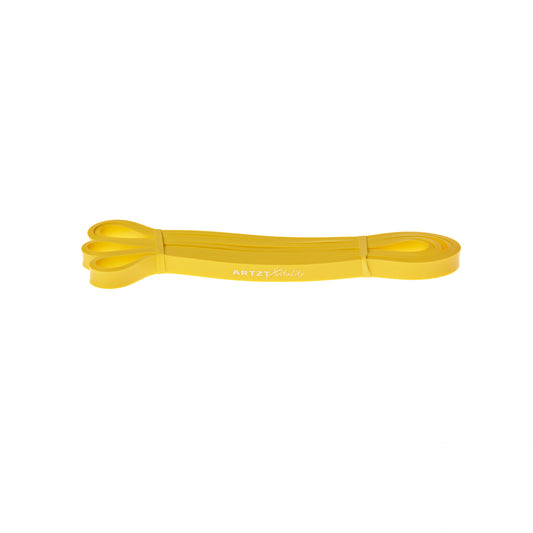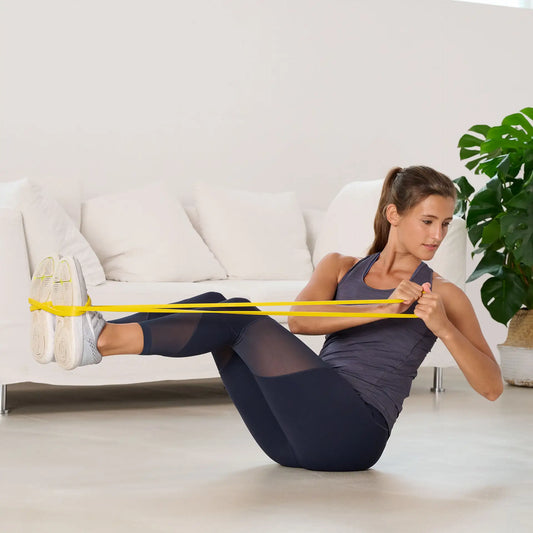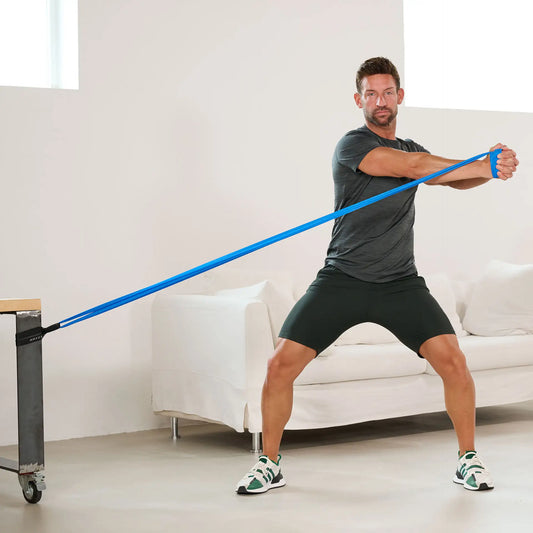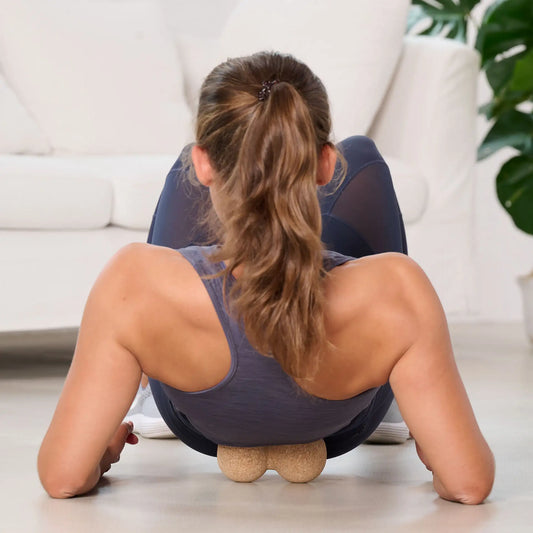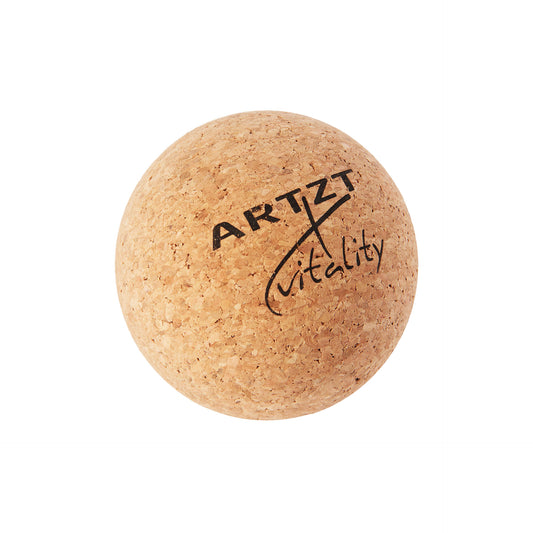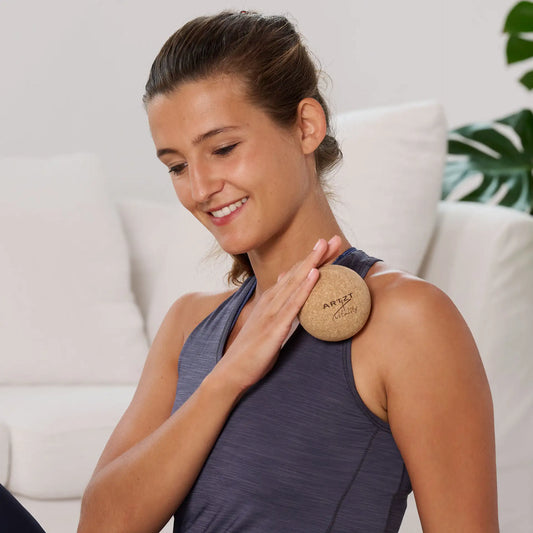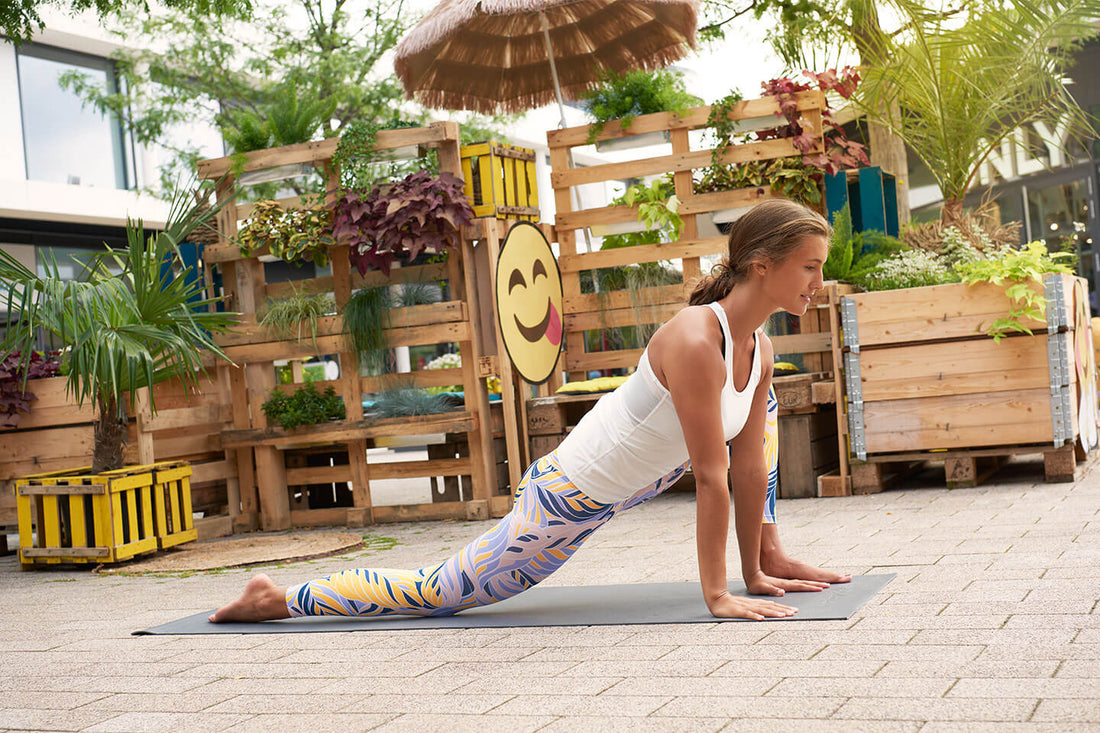
A strong piece - focus on the pelvic floor
Share
By Sandra Cammann | Sports scientist and freelance journalist
Reading time: 7 mins
It's never too late: targeted pelvic floor training should be part of everyday life, just like brushing your teeth. Not only do you reduce problems with urination, you also become more self-confident, support your spine and feel better all around!
Women in particular struggle with the constant fear of not making it to the toilet fast enough. Birth, obesity, chronic bladder infections, menopausal symptoms or weak connective tissue can cause problems for the pelvic floor. However, not only women are affected by this – men also notice with increasing age that the soil sags. Targeted training in everyday life can help very quickly, but must be continued.
I'll show you what everyday training can look like.
Contents
What is the pelvic floor actually?
What is the job of the pelvic floor?
Why Pelvic Floor Training?
How do I recognize a weak pelvic floor?
How do I train the pelvic floor?
Get a feeling for the pelvic floor
The workout for more pelvic power
First aid for bladder weakness
What is the pelvic floor actually?
In our pelvis there is a muscle complex that extends from the pubic bone to the coccyx and - to put it simply - also forms cross-connections to the ischial tuberosities. This is the pelvic floor. Embedded in it are the urethra, the rectum and – in women – the vagina, which are supported in their position and function by the pelvic floor.
The pelvic floor muscles are quite complex and consist of several layers of muscle, both longitudinal and transverse, as well as fascial tissue and tendons. It is divided into a rear pelvic floor section, consisting of a longitudinal and transverse muscle network in which the rectum is embedded, the front pelvic floor section, which also runs longitudinally and transversely and encloses the urethra and, in women, the vagina. There is also increased connective tissue in this area. The third part of the pelvic floor, the erectile tissue and sphincter muscle layer, consists, among other things, of a network of blood vessels.
What is the job of the pelvic floor?
Anatomically, the pelvic floor has the important task of supporting the bladder, vagina and uterus in the bach cavity. This is also known as "reflexive counter-holding", i.e. tensing as a reflex reaction to the pressure that comes from above, i.e. from the abdominal cavity. This can be triggered by sneezing, jumping, laughing, and heavy lifting.
But that's not all, because like all muscles, the pelvic floor muscles also work actively to maintain various bodily functions. It opens and closes the urethra, vagina and anus by contracting and relaxing, so it has an important function in terms of continence and incontinence. By the way: There is even a "own" muscle within the pelvic floor for the proper functioning of the bladder: the urinary tract sphincter, which regulates the closure of the urethra and thus plays an important role in the matter of incontinence.
Last but not least, well-functioning pelvic floor muscles also ensure increased sensitivity and thus a feeling of pleasure during sexual intercourse. The entire pelvic floor pulsates at the moment of orgasm, tension and relaxation occur in quick succession and thus ensure increased pleasure.
All reasons to deal more with these rather neglected muscles.
Why Pelvic Floor Training?
Like any muscle, the pelvic floor can only function satisfactorily if it is trained, i.e. strong enough to close the urinary tract and the rectum at all times. If this is not the case, there can be major or minor accidents in various situations: A violent sneeze can then be enough and the muscle can no longer “hold” with the result that the urge to urinate can no longer be controlled. This problem, known as bladder weakness, especially in women, can have many causes.
In most cases, after pregnancy and childbirth, there is a weakening or overstretching of the pelvic floor and thus temporary bladder weakness.
You can imagine it like this: Four bones enclose the pelvic floor. The two ischial bones, the pubic bone and the coccyx. From the picture, the pelvis is reminiscent of a bowl that connects to the torso and legs.
This shell contains the internal organs. This bowl is open at the bottom. The organs are only supported and held by the pelvic floor muscles. The muscle layers overlap in a lattice pattern and form a protective safety net. During childbirth, these muscles need to be able to relax deeply and stretch extremely. The pelvic floor gets this elasticity from its special composition: the pelvic floor is suspended at the bony connections via connective tissue covers like a hammock. This makes him extremely elastic, but unfortunately also prone to injury.
If an injury occurs, other muscles such as the stomach and back must take over the work of the pelvic floor. This works well for a short time, but is a disaster in the long run. Muscles become tense from doing too much work, the spine becomes crooked, and unphysiological stress occurs that can cause serious damage. Pelvic floor muscles, on the other hand, are all-rounders. Provided they are properly loaded and trained.
Therefore, moderate pelvic floor training is usually recommended during pregnancy in order to keep the pelvic floor "fit" in the truest sense of the word for the increasing pressure during pregnancy. After the birth, the overstretched tissue in the pelvic floor area should in any case be strengthened again as part of postnatal exercises in order to restore full function.
But not only pregnancy and childbirth cause a weakening of the pelvic floor. It is often the completely normal aging process and the associated lowering of the uterus, for example, which then permanently presses on the muscles. Hormonal changes during menopause can also cause the pelvic floor muscles to relax.
The weakness of the bladder, which is particularly feared by older people, is usually the result of a weak pelvic floor. The urinary bladder does piecework every day. She fills up, holds the urine and finally releases it again. Relax, hold, tense – in order for the urethra to hold tight, the muscle must be well trained. The finest nerves control this mechanism. A disturbance in this system leads to unpleasant and mentally stressful urinary incontinence. Those affected then quickly reduce their fluid intake.
In any case, many people often drink too little as they get older. The inevitable consequence of this is that the storage capacity of the bladder decreases with lower fluid intake. The consequence of this is obvious: the muscle becomes weaker and weaker. Even with small amounts of liquid, the urge to urinate occurs and the problem worsens.
In order to avoid all these problems, but above all the dreaded bladder weakness, the pelvic floor muscles can and should be consciously trained. lifetime. And this does not only apply to women! Because men also feel the consequences of slowly slackening muscles and weakening connective tissue as they get older.
How do I recognize a weak pelvic floor?
As already described above, you can recognize a weak pelvic floor by the fact that when you sneeze, cough, laugh, but also jump, and sometimes even when you run, small amounts of urine flow out unintentionally. Difficulties in bowel control also initially indicate a weak pelvic floor and can affect men and women alike as they get older.
There may also be pain in the pelvis, testicles and groin area or when going to the toilet and the feeling of incomplete emptying of the bladder or bowel. Likewise, non-specific pain during sexual intercourse or during orgasm indicates an untrained pelvic floor.
A weakening of the pelvic floor muscles should also be considered in the case of medically unexplained pain in the lower back and hips.
The weak pelvic floor becomes particularly evident in the event of an organ prolapse (e.g. prolapsed uterus). Here, medical care (possibly surgery) and pelvic floor training must be coordinated very precisely.
How do I train the pelvic floor?
As with any training, the pelvic floor muscles should also be trained in a targeted manner and according to a plan. Daily gentle stretching and strengthening exercises are the best way to permanently and effectively counteract the relaxation of the pelvic floor.
For many women (and men), the most important thing is to create awareness of the region of the pelvic floor, because often there is simply a lack of awareness of this region of the body. Then it is much easier to contract the individual muscles in a targeted manner and – very importantly – to consciously relax them again.
Special exercises from yoga and Pilates are usually used, often modified and adapted to the specific region. The exercises usually have a holistic effect by creating awareness of the muscles, gently strengthening and stretching them.
Get a feeling for the pelvic floor
Dedicate 10 minutes of your time every day to the pelvic floor and you will soon achieve great results. Not only the sphincters are getting stronger, the middle is also formed. A great side effect!
- Sit on a rice pillow and imagine trying to lift a grain of rice with all your strength, as if your pelvic floor were a finger.
- Make your mouth and pelvic floor smile. If the pelvic floor is tense, it is usually also the jaw joints, because there is a very close connection here. A big smile relaxes the facial muscles. Bring that smile into the pelvic floor at the same time by lifting it sideways like the corners of your mouth.
- Lie on your back and close your eyes. Now imagine that the sun is shining around your belly button. It gets light and warm in the abdomen. Deliberately send this heat into your lower abdomen to your pelvic floor.
The workout for more pelvic power
Keep your bottom relaxed during the exercises - the pelvic floor should do the work. At the same time, you concentrate on your lower abdomen. Because the pelvic floor and lower abdomen as a unit are an unbeatable team!

Balance: Sit down on an exercise mat. Sit bones anchor to the floor. The back is long and erect. Take a folded towel between your knees and lift your lower legs parallel to the floor. Release your hands and extend your arms forward. Keep breathing and hold this position for 3-5 breaths. Return to starting position and repeat 5 times.

Pelvic lift: Lie on your back with your feet against the wall. The knees form a right angle. Place a small pillow under your buttocks. Now raise your pelvis and press your feet firmly against the wall. Activate inner thighs and pelvic floor. Butt loose. Hold for 3-5 breaths, then lower the pelvis and repeat 5 times.

Relaxed hips: Lie on your back on a mat. Now raise your legs, bend your knees outward and keep your thighs parallel to the floor. Feel your pelvic floor and a comfortable stretch. To make the position even more intense, you can put your hands on your knees and gently pull them outwards. The hip is opened. Hold this position as long as you are comfortable. It completes your daily pelvic floor workout.
First aid for bladder weakness
Good news: The urinary bladder can be easily trained again even if there is a bladder dysfunction. First and foremost, of course, it is important to drink enough liquid – at least 1.5 liters per day. Then you first try to delay going to the toilet by only five minutes. If you lean your upper body slightly forward while sitting, the urge to urinate will decrease.
In the next move, after each visit to the toilet, you raise the pelvic floor when you close your pants. Imagine there is another zipper in the bottom of the pool. After several repetitions you will be able to record small successes.









